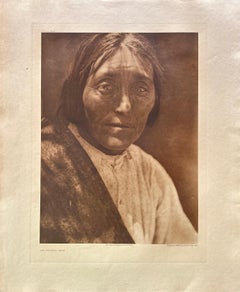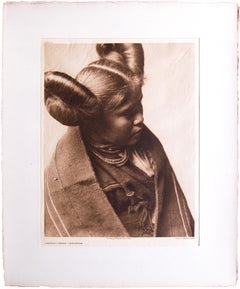Items Similar to Qahatika Girl, The North American Indian, Edward S. Curtis, Photogravure, 1907
Want more images or videos?
Request additional images or videos from the seller
1 of 6
Edward CurtisQahatika Girl, The North American Indian, Edward S. Curtis, Photogravure, 1907
$17,500
£13,358.80
€15,356.84
CA$24,625.63
A$27,384.72
CHF 14,383.05
MX$334,805.68
NOK 179,226.57
SEK 168,962.25
DKK 114,611.64
About the Item
QAHATIKA GIRL
Portfolio 2, plate no. 56
THE NORTH AMERICAN INDIAN BY EDWARD S. CURTIS
SHIPPING CHARGES INCLUDE SHIPPING, PACKAGING & INSURANCE
Considered by art collectors as extremely desirable among all his his works!
Image size 15.5 x 11 3/4 inches, Dutch “Van Gelder" paper, Excellent condition, this is an original photogravure from the 20 volume set.
Excellent condition, framed to museum standards.
This is an original photogravure from the 20 volume set , The North American Indian. It is not a modern re-strike.
Free Shipping Continental US
The Qahatika (or Kohatk) were a Native American tribe of the Southwestern United States. They were apparently a subtribe of the Tohono O'Odham, and lived in the vicinity of present-day Quijotoa, Arizona.
According to Edward Sheriff Curtis, the Qahatika belonged to Pima group of tribes and lived in five villages "in the heart of the desert south of the Gila River",[2] about forty miles from the Pima reservation. A legend said that after the Pima suffered defeat in a war with Apache, the tribe fled and split. One splinter of the tribe, the ancestors of Qahatika, went into the barren desert and settled there in separation from other Pimas.[3] The Qahatika, according to Curtis, managed to find land suitable for growing wheat. Their methode of "dry farming" relied exclusively on winter rainfall: the soil near their villages was capable of retaining winter moisture for a whole season, and a few winter rains guaranteed a fair crop in summer.
The Qahatika seen by Curtis were "almost identical in appearance" to Pima and Papago. They retained the Pima art of basket weaving and developed their own tradition of pottery.[5] Their houses were built almost exclusively of dried giant cactus carcasses.
In the summer of 1900, Curtis made his first independent, self-financed trip into the field. For this important trip, he chose to photograph the Hopi, Navajo, and Apache of the Southwest.
From 1900 to 1925 Curtis would study and photograph the various tribes of the Southwest more frequently than those of any other area. He ultimately devoted more volumes of The North American Indian to the Southwest than to any other region. The Indians of the Southwest lived primarily in Arizona and New Mexico, although their presence extended into parts of Texas, California and northern Mexico. Because of the scarcity of native vegetation and game and the sporadic availability of water, the tribal peoples of the Southwest, by necessity, became largely dependent on agriculture for their subsistence. As their reliance on agriculture grew, the Indians of the Southwest adopted an increasingly village-oriented culture. In fact, some of their villages and pueblos have been inhabited continuously for hundred of years, making them among the oldest permanent settlements still in use in North America today.
One of the reasons Curtis was drawn to Southwest Indian tribes initially was that they afforded him an unusual glimpse into pre-white Indian life. In the early 1900s, many people still lived in traditional ways, strongly tied to their ancient culture and religious traditions. Curtis was also fascinated by the strong relationship Southwest Indians had with their ancestral land, which in both its physical and metaphysical manifestations was at the center of their history, tradition, and beliefs. Virtually all practices revolved around it.
Curtis’s immersion in the landscape and cultures of the Southwest Indian is clearly evident in the photographs he made in the region. These images, and the written records of the Southwest that Curtis produced over several decades, mirror his deep understanding of the unique geo-cultural interplay of people and place.
Over one hundred years ago, Edward Sheriff Curtis began a thirty-year odyssey to photograph and document the lives and traditions of the Native peoples of North America. This monumental project, The North American Indian, was hailed by The New York Herald as “the most gigantic undertaking since the making of the King James edition of the Bible.”
Edward Sheriff Curtis not only attempted, but actually achieved the impossible. With The North American Indian, he created an irreplaceable photographic and ethnographic record of more than eighty of North America’s native nations – a record first published between 1907 and 1930, which after decades of obscurity in rare book rooms and private collections, has experienced its renaissance. Comprising twenty volumes, twenty portfolios, thousands of pages of text, and more than twenty- two hundred photogravures, The North American Indian remains not only an unparalleled artistic and historic achievement, but a watershed in publishing history. Chistopher Cardozo
- Creator:Edward Curtis (1868 - 1952, American)
- Dimensions:Height: 15.5 in (39.37 cm)Width: 11.75 in (29.85 cm)
- Medium:
- Movement & Style:
- Period:
- Condition:
- Gallery Location:Phoenix, AZ
- Reference Number:1stDibs: LU2623215172022
Edward Curtis
Born in 1868 near Whitewater, Wisconsin, Edward Sheriff Curtis became one of America's finest photographers and ethnologists. Beginning in 1896 and ending in 1930, Curtis photographed and documented every major Native American tribe west of the Mississippi, taking over 40,000 negatives of eighty tribes. For thirty years, he devoted his life to an odyssey of photographing and documenting the lives and traditions of the Native people of North America. His photographs had an immense impact on the national imagination and continue to shape the way we see Native life and culture. His life's work was to record the faces and lifestyles of the Indians before they vanished forever beneath the settling of the continent by the white man. He photographed his subjects from the deserts of the Southwest to the ice floes of the Arctic, recording with his camera and pen the look and the culture of more than eighty tribes. It was an achievement both poignant and monumental.
About the Seller
No Reviews Yet
Vetted Professional Seller
Every seller passes strict standards for authenticity and reliability
1stDibs seller since 2023
6 sales on 1stDibs
- ShippingRetrieving quote...Shipping from: Phoenix, AZ
- Return Policy
Authenticity Guarantee
In the unlikely event there’s an issue with an item’s authenticity, contact us within 1 year for a full refund. DetailsMoney-Back Guarantee
If your item is not as described, is damaged in transit, or does not arrive, contact us within 7 days for a full refund. Details24-Hour Cancellation
You have a 24-hour grace period in which to reconsider your purchase, with no questions asked.Vetted Professional Sellers
Our world-class sellers must adhere to strict standards for service and quality, maintaining the integrity of our listings.Price-Match Guarantee
If you find that a seller listed the same item for a lower price elsewhere, we’ll match it.Trusted Global Delivery
Our best-in-class carrier network provides specialized shipping options worldwide, including custom delivery.More From This Seller
View AllLuzi Girl Papago The North American Indian, Edward S. Curtis, Photogravure, 190
By Edward Curtis
Located in Phoenix, AZ
LUZI GIRL PAPAGO, 1907
Portfolio 2, Plate 53
THE NORTH AMERICAN INDIAN BY EDWARD S. CURTIS
Image size 15.5 x 10 1/4 inches, Excellent condition.
This is an original photogravur...
Category
Early 20th Century Academic Portrait Photography
Materials
Photogravure
Hopi by Lon Megargee, Original Signed Block Print ca. 1920s
Located in Phoenix, AZ
Title: Hopi ca. 1920s
Artist: Lon Megargee
Medium: Block Print
Size: 11 x 11 inches (Sight Measurement)
SHIPPING CHARGES INCLUDE SHIPPING, PACKAGING & INSURANCE
Creator of Stetson's hat logo "Last Drop from his Hat"
Image of Lon Megargee not included in purchase.
Lon Megargee
1883 - 1960
At age 13, Lon Megargee came to Phoenix in 1896 following the death of his father in Philadelphia. For several years he resided with relatives while working at an uncle’s dairy farm and at odd jobs. He returned to Philadelphia in 1898 – 1899 in order to attend drawing classes at the Pennsylvania Academy of the Fine Arts. Back in Phoenix in 1899, he decided at the age of 16 to try to make his living as a cowboy.
Lon moved to the cow country of Wickenburg, Arizona where he was hired by Tex Singleton’s Bull Ranch. He later joined the Three Bar R. . . and after a few years, was offered a job by Billy Cook of the T.T. Ranch near New River. By 1906, Megargee had learned his trade well enough to be made foreman of Cook’s outfit.
Never shy about taking risks, Lon soon left Cook to try his own hand at ranching. He partnered with a cowpuncher buddy, Tom Cavness, to start the El Rancho Cinco Uno at New River. Unfortunately, the young partners could not foresee a three-year drought that would parch Arizona, costing them their stock and then their hard-earned ranch.
Breaking with his romantic vision of cowboy life, Megargee finally turned to art full time. He again enrolled at the Pennsylvania Academy of Art and then the Los Angeles School of Art and Design during 1909 – 1910. The now well-trained student took his first trip to paint “en plein air” (outdoors) to the land of Hopi and Navajo peoples in northern Arizona. After entering paintings from this trip in the annual Territorial Fair at Phoenix, in 1911, he surprisingly sold his first oil painting to a major enterprise – the Santa Fe Railroad . . . Lon received $50 for “Navajos Watching the Santa Fe Train.” He soon sold the SFRR ten paintings over the next two years. For forty years the railroad was his most important client, purchasing its last painting from him in 1953.
In a major stroke of good fortune during his early plein-air period, Megargee had the opportunity to paint with premier artist, William R. Leigh (1866 – 1955). Leigh furnished needed tutoring and counseling, and his bright, impressionistic palette served to enhance the junior artist’s sense of color and paint application. In a remarkable display of unabashed confidence and personable salesmanship, Lon Megargee, at age 30, forever linked his name with Arizona art history. Despite the possibility of competition from better known and more senior artists, he persuaded Governor George Hunt and the Legislature in 1913 to approve 15 large, historic and iconic murals for the State Capitol Building in Phoenix. After completing the murals in 1914, he was paid the then princely sum of roughly $4000. His Arizona statehood commission would launch Lon to considerable prominence at a very early point in his art career.
Following a few years of art schooling in Los Angeles, and several stints as an art director with movie studios, including Paramount, Megargee turned in part to cover illustrations for popular Western story magazines in the 1920s.
In the 1920s, as well, Lon began making black and white prints of Western types and of genre scenes from woodblocks. These prints he generally signed and sold singly. In 1933, he published a limited edition, signed and hard-cover book (about 250 copies and today rare)containing a group of 28 woodblock images. Titled “The Cowboy Builds a Loop,” the prints are noteworthy for strong design, excellent draftsmanship, humanistic and narrative content, and quality. Subjects include Southwest Indians and cowboys, Hispanic men and women, cattle, horses, burros, pioneers, trappers, sheepherders, horse traders, squaw men and ranch polo players. Megargee had a very advanced design sense for simplicity and boldness which he demonstrated in how he used line and form. His strengths included outstanding gestural (action) art and strong figurative work. He was superb in design, originality and drawing, as a study of his prints in the Hays collection reveals.
In 1944, he published a second group of Western prints under the same title as the first. Reduced to 16 images from the original 28 subjects, and slightly smaller, Lon produced these prints in brown ink on a heavy, cream-colored stock. He designed a sturdy cardboard folio to hold each set. For the remainder of his life, Lon had success selling these portfolios to museum stores, art fairs and shows, and to the few galleries then selling Western art.
Drawing on real working and life experiences, Lon Megargee had a comprehensive knowledge, understanding and sensitivity for Southwestern subject matter. Noted American modernist, Lew Davis...
Category
1920s American Impressionist Figurative Prints
Materials
Woodcut
Indians of North America 1936 by Jo Mora
Located in Phoenix, AZ
Indians of North America 1936
Jo Mora
Lithograph
Paper size: 31 7/8 x 24 1/4 inches
Image size; 30 1/4 x 22 7/8 inches
These are the original lithographs from the Jo Mora Estate from Jo Mora Jr.
THESE ARE NOT REPRODUCTIONS!
SHIPPING CHARGES INCLUDE SHIPPING, PACKAGING & INSURANCE
Joseph Jacinto Mora 1876 – 1947
Mora was born in Montevideo, Uruguay, and was the son of Domingo Mora, a well-known painter and sculptor who brought his family to the United States in the mid 1890s and then became a teacher in New York at the Art Students League. Joseph and his artist brother Luis Mora (1874-1940) grew up being much influenced by the creative atmosphere of their father’s studio. In 1904, he returned to Arizona and New Mexico and lived with Hopi and Navajo tribes, learning their languages and painting depictions of their ceremonies, especially the Kachina ceremonial dances. One of the results of his Western travels was a series of humorous maps that were spoofs of the national parks and that were made into posters. In the 1930s, the maps sold for 25 cents each and were distributed through souvenir shops at the parks. He also painted a watercolor series, “Horsemen of the West” and wrote two books, “Trail Dust and Saddle Leather” and “Californios.” Joseph Mora died in Pebble Beach on October 10, 1947. Devoting his life to exploration of subjects as diverse as vaqueros, Hopi Kachina figures, the Arizona landscape, and California missions, Joseph Mora also excelled as a writer, photographer, designer, children’s book illustrator, and map maker.
“Apart from the bread and butter commissions that he referred to as “pot-boilers,” Mora has left a vast legacy of fine artwork. His contributions to public sculpture and architectural decorations, which are numerous and diverse, gaze calmly at the world from buildings in Los Angeles, San Francisco, Salinas, San Jose and Portland. Mora’s dioramas and large-scale figures are permanently in Monterey and Sacramento, California and Claremore and Bartlesville, Oklahoma. His drawings, paintings and photographs are cherished in private collections and private institutions across the country and first editions of his books are highly valued. But in the final analysis, Mora’s most important works may be his cartes.
In these entertaining maps, Mora combined his encyclopedic knowledge of history, his writing, drawing, and cartooning skills, his fine sense of design, and his sense of playfulness to create an art form uniquely his own. Mora’s cartes are still captivating more than fifty years after their completion, and they exemplify the popular, entertaining, direct, and informative art at which Mora excelled.”
Betty Hoag McGlynn
• Original works by Maynard Dixon, Lon Megargee, Ed Mell, Fritz Scholder, Bill Schenck, Bill Lesch, Luis Jimenez, Greg
Singley, Dan Budnik, and other 20th century Western, WPA and Contemporary Southwestern artists.
• The Fine Art Estate of Lon Megargee
• Vintage rodeo...
Category
1930s Other Art Style More Prints
Materials
Lithograph
Apache Mountain Spirit Dancer
Located in Phoenix, AZ
SHIPPING CHARGES INCLUDE SHIPPING, PACKAGING & **INSURANCE**
Apache Mountain Spirit Dancer
James Rome
Etching 62/100
Image: 21.75 x 27.5 inches
Paper: 25 x...
Category
1980s Contemporary Figurative Prints
Materials
Etching
The War Bonnet by Lon Megargee
Located in Phoenix, AZ
Lon Megargee 1883-1960
"The War Bonnet"
Wood block print
Signed: original pencil signature, lower right
Image size: 11 x 11 inches
Frame size 22 x 22 inches
Creator of Stetson's hat logo "Last Drop from his Hat"
Lon Megargee
1883 - 1960
At age 13, Lon Megargee came to Phoenix in 1896 following the death of his father in Philadelphia. For several years he resided with relatives while working at an uncle’s dairy farm and at odd jobs. He returned to Philadelphia in 1898 – 1899 in order to attend drawing classes at the Pennsylvania Academy of the Fine Arts. Back in Phoenix in 1899, he decided at the age of 16 to try to make his living as a cowboy.
Lon moved to the cow country of Wickenburg, Arizona where he was hired by Tex Singleton’s Bull Ranch. He later joined the Three Bar R. . . and after a few years, was offered a job by Billy Cook of the T.T. Ranch near New River. By 1906, Megargee had learned his trade well enough to be made foreman of Cook’s outfit.
Never shy about taking risks, Lon soon left Cook to try his own hand at ranching. He partnered with a cowpuncher buddy, Tom Cavness, to start the El Rancho Cinco Uno at New River. Unfortunately, the young partners could not foresee a three-year drought that would parch Arizona, costing them their stock and then their hard-earned ranch.
Breaking with his romantic vision of cowboy life, Megargee finally turned to art full time. He again enrolled at the Pennsylvania Academy of Art and then the Los Angeles School of Art and Design during 1909 – 1910. The now well-trained student took his first trip to paint “en plein air” (outdoors) to the land of Hopi and Navajo peoples in northern Arizona. After entering paintings from this trip in the annual Territorial Fair at Phoenix, in 1911, he surprisingly sold his first oil painting to a major enterprise – the Santa Fe Railroad . . . Lon received $50 for “Navajos Watching the Santa Fe Train.” He soon sold the SFRR ten paintings over the next two years. For forty years the railroad was his most important client, purchasing its last painting from him in 1953.
In a major stroke of good fortune during his early plein-air period, Megargee had the opportunity to paint with premier artist, William R. Leigh (1866 – 1955). Leigh furnished needed tutoring and counseling, and his bright, impressionistic palette served to enhance the junior artist’s sense of color and paint application. In a remarkable display of unabashed confidence and personable salesmanship, Lon Megargee, at age 30, forever linked his name with Arizona art history. Despite the possibility of competition from better known and more senior artists, he persuaded Governor George Hunt and the Legislature in 1913 to approve 15 large, historic and iconic murals for the State Capitol Building in Phoenix. After completing the murals in 1914, he was paid the then princely sum of roughly $4000. His Arizona statehood commission would launch Lon to considerable prominence at a very early point in his art career.
Following a few years of art schooling in Los Angeles, and several stints as an art director with movie studios, including Paramount, Megargee turned in part to cover illustrations for popular Western story magazines in the 1920s.
In the 1920s, as well, Lon began making black and white prints of Western types and of genre scenes from woodblocks. These prints he generally signed and sold singly. In 1933, he published a limited edition, signed and hard-cover book (about 250 copies and today rare)containing a group of 28 woodblock images. Titled “The Cowboy Builds a Loop,” the prints are noteworthy for strong design, excellent draftsmanship, humanistic and narrative content, and quality. Subjects include Southwest Indians and cowboys, Hispanic men and women, cattle, horses, burros, pioneers, trappers, sheepherders, horse traders, squaw men and ranch polo players. Megargee had a very advanced design sense for simplicity and boldness which he demonstrated in how he used line and form. His strengths included outstanding gestural (action) art and strong figurative work. He was superb in design, originality and drawing, as a study of his prints in the Hays collection reveals.
In 1944, he published a second group of Western prints under the same title as the first. Reduced to 16 images from the original 28 subjects, and slightly smaller, Lon produced these prints in brown ink on a heavy, cream-colored stock. He designed a sturdy cardboard folio to hold each set. For the remainder of his life, Lon had success selling these portfolios to museum stores, art fairs and shows, and to the few galleries then selling Western art.
Drawing on real working and life experiences, Lon Megargee had a comprehensive knowledge, understanding and sensitivity for Southwestern subject matter. Noted American modernist, Lew...
Category
Early 20th Century American Impressionist Figurative Prints
Materials
Woodcut
Jo Mora, Evolution of the Cowboy 1933, from Jo Mora Estate
Located in Phoenix, AZ
Evolution of the Cowboy, 1933
Original Lithograph
Excellent condition, came directly from Jo Mora Jr.
Unframed!!
SHIPPING CHARGES INCLUDE SHIPPING, PACKAGING & INSURANCE
Original version was called Evolution of the Cowboy, 1933 or referred today as "Sweetheart of the Rodeo", Images from the poster were used for "Sweetheart of the Rodeo", the sixth album by American rock band the Byrds and was released on August 30, 1968. It was hated when released, today it is considered one of the great classics.
This is an original lithograph from the Jo Mora Estate from Jo Mora Jr.
Joseph Jacinto Mora (October 22, 1876 – October 10, 1947) was a Uruguayan-born American cowboy, photographer, artist, cartoonist, illustrator, painter, muralist, sculptor, and historian who wrote about his experiences in California. He has been called the "Renaissance Man of the West".
Early life
Mora was born on October 22, 1876, in Montevideo, Uruguay. His father was the Catalan sculptor, Domingo Mora, and his mother was Laura Gaillard Mora, an intellectual born in the Bordeaux region of France. His elder brother was F. Luis Mora, who would become an artist and the first Hispanic member of the National Academy of Design. The family entered the United States in 1880 and first settled in New York City, and then Perth Amboy, New Jersey.
Jo Mora 1931 Yosemite map
Jo Mora studied art at the Art Students League of New York and the Cowles Art School in Boston. He also studied with William Merritt Chase. He worked as a cartoonist for the Boston Evening Traveller, and later, the Boston Herald.
In the spring of 1903, Mora arrived in Solvang, California. He stayed at the Donohue Ranch. He made plans to travel to the Southwest to paint and photograph the Hopi. He spent time at the Mission Santa Inés; those photographs are now maintained by the Smithsonian Institution. Mora visited many Spanish missions in California that summer by horseback. He followed the "Mission Trail", also called the "Kings Highway".
In 1904, Mora visited Yosemite. Later, in 1904, to 1906, visited Arizona where he took photographs, painted and otherwise recorded the daily life of these Native Americans. Because the Hopi and other tribes have voiced their concerns more recently about photographs depicting religious ceremonies, the tribal nation should be contacted before they are used. He learned the Native languages and made detailed drawings of what he observed.
Career
In 1907, Mora wrote and illustrated the comic strip Animaldom.
In 1907, Mora returned to California and married Grace Needham. Their son, Joseph Needham Mora, was born on March 8, 1908. The Moras moved to San Jose, California, where Mora continued his work.
On 22 February 1911, the Native Sons of the Golden West Building, in San Francisco, with six terra cotta panels, by Domingo Mora and his son, Jo Mora, was dedicated.
In 1915, he served on the International Jury of Awards at the Panama–Pacific International Exposition and displayed six sculptures.[9]
In 1915-16 two of his sculptural commissions were revealed: the bronze memorial tablet with the profile of the late Archbishop Patrick W. Riordan for the Knights of Columbus and the Cervantes Monument in San Francisco's Golden Gate Park.[10][11] By 1919, he was sculpting for the Bohemian Club, including the Bret Harte Memorial plaque, completed in August 1919 and mounted on the outside of the private men's club building in San Francisco.
Carmel-by-the-Sea
In 1921, the Mora family relocated to Carmel-by-the-Sea, California, the largest art colony on the West Coast, making it their primary residence. He constructed a Craftsman-style home, which is located on the west side of San Carlos Street, the third house south of 1st Avenue.
Mora received a commission for the bronze and travertine Cenotaph, for Father Junípero Serra in the Memorial Chapel at the west end of Mission Carmel.
Mora was a director of the Carmel Art Association as early as 1934. His sculptures were exhibited between 1927 and 1934 in various galleries in Carmel.
Jo Mora is a serious sculptor, a responsible amateur actor; when mixed up with pen and ink, a humorist! Comic strips was once his trade. He was famous at it. That was years ago but his art of cartooning bloomed again when in recent years he produced the well known Mora Map of the Monterey Peninsula. Most successful with bronze statue creations which decorate many gardens in East and West. If he has a specialty in figures it is cowboys. He knows his West. Jo Mora will ever be famed for his portrayal of Pancho Lopez, The Bad Man, at Carmel Playhouse. He does everything well and is handsome while doing it. He is happily married-alas!
— Carmel Pine Cone
During the Great Depression, Mora created the "Carmel Dollar" as part of Carmel's program, offering unemployed residents scrip for public service, exchangeable for groceries and essentials; a three-cent stamp on the certificate's back acknowledged their efforts. When full, merchants accepted the certified scrip for goods or a dollar.
Architect Robert Stanton...
Category
1930s Other Art Style More Prints
Materials
Lithograph
You May Also Like
A Hopi Woman, 1905
By Edward S. Curtis, 1868-1952
Located in Los Angeles, CA
Edward S. Curtis
A Hopi Woman
1905
Photogravure Print
22 x 18 inches
Vintage large format Curtis Portfolio Photogravure, Portfolio 12, Plate #411, The North American Indian, on Japa...
Category
Early 20th Century Other Art Style Portrait Photography
Materials
Photogravure
Aged Pomo Woman [Plate 488]
By Edward Curtis
Located in New York, NY
This photogravure is offered by ClampArt, located in New York City.
Category
1920s Other Art Style Portrait Photography
Materials
Photogravure
Edward S Curtis (1868-1952) An Isleta Man, 1925
By Edward S. Curtis, 1868-1952
Located in CA, CA
Edward S Curtis (1868-1952)
Title: An Isleta Man
Plate: 549
Portfolio: Volume 16
Printer: Suffolk Eng. Co. Cambridge Mass
Medium: Photogravure
Date: 1925
Dimensions:
Sheet: W 17 ¾...
Category
Vintage 1920s American American Classical Photography
Materials
Paper
Chaiwa - Tewa - Profile, 1921
By Edward S. Curtis, 1868-1952
Located in Los Angeles, CA
Edward S. Curtis
Chaiwa - Tewa - Profile
1921
Photogravure Print
22 x 18 inches
Vintage large format Curtis Portfolio Photogravure, Portfolio 12, Plate #415, The North American Indi...
Category
Early 20th Century Other Art Style Portrait Photography
Materials
Photogravure
"Ogalala Woman" by Edward S. Curtis, 1908
By Edward S. Curtis, 1868-1952
Located in Colorado Springs, CO
Presented is a fine photogravure portrait of an Ogalala woman by Edward Curtis. The image is Plate 94 from Supplementary Portfolio 3 of Edward Curtis' epic project The North American Indian. The caption provided by Curtis for this image is “A face so strong that it is almost masculine, showing strikingly how slight may be the difference between the male and female physiognomy in some Primitive people.” The photograph was taken in 1907 and the photogravure was published in 1908 by John Andrew & Son, in Boston.
Edward S. Curtis created one of the most enduring and iconic visual records in the history of the photographic medium. He was an award-winning artist, a consummate craftsman, a visionary, an intrepid entrepreneur, and was highly regarded as a respected ethnographer and publisher.
Curtis began photographing Native Americans in the mid-1890s and selling these images in his successful Downtown Seattle studio. One of his earliest models was Princess Angeline, the aged daughter of chief Sealth, the Suquamish Indian after whom Seattle is named. At the National Photographic Convention of 1899 Curtis was awarded the grand prize for three of his soft-focused, sepia-toned images of Puget Sound Native Americans: Evening on the Sound, The Clam Digger, and The Mussel Gatherer.
Curtis spent the summer of 1900 with George Bird Grinnell observing the Sun Dance at an encampment of Blood, Blackfeet, and Algonquin in Montana. This was a pivotal experience for Curtis, confirming his desire to study and photograph the Native tribes of North America. A trip to visit the Hopi reservation in Arizona a few months later further fueled his enthusiasm. Curtis envisioned a plan to create a massive scholarly and artistic work that would document the tribes west of the Mississippi, their ceremonies, beliefs, daily life, and landscapes.
In 1906, Curtis approached railroad tycoon J.P. Morgan to request financial assistance for his project. Morgan agreed to pay him a total of $75,000, or $15,000 a year for five years. Morgan and Curtis decided that Curtis' masterwork, The North American Indian, would be a set of 20 volumes of ethnographic text illustrated with high quality photoengravings taken from his glass plate negatives. Each of these volumes would be accompanied by a portfolio of large Size images, all sumptuously bound in Moroccan leather. The papers used for printing would also be of the best quality: a Dutch etching stock by Van Gelder, a Japanese vellum, and for the most discerning subscribers, a translucent Japanese tissue paper. To fund publication, Curtis would sell subscriptions at approximately $3,000 per set, with a total of 500 sets to be published.
An ambitious and extensive project, Curtis spent much of his life documenting as many Native tribes as possible. The importance and the urgency of the task was clear to him, as he wrote in the introduction to his first volume of The North American Indians in 1907, "The information that is to be gathered . respecting the mode of life of one of the great races of mankind, must be collected at once or the opportunity will be lost." In 1930, some 24 years after his initial request for funding, the last two volumes, Vol. 19 and Vol. 20, were published and The North American Indian project was finally completed. Curtis took over 40,000 photographs and made over 10,000 wax cylinder...
Category
Antique Early 1900s American Photography
Materials
Paper
East Mesa Girls, 1921
By Edward S. Curtis, 1868-1952
Located in Los Angeles, CA
Edward S. Curtis
East Mesa Girls, 1921
Photogravure Print
18 x 22 inches
Vintage large format Curtis Portfolio Photogravure, Portfolio 12, Plate #427, The North American Indian, on ...
Category
Early 20th Century Other Art Style Landscape Photography
Materials
Photogravure
More Ways To Browse
Re Antiques
Hopi Art
Indian Pottery
Indian Antique House
Girl With Basket
Antique Heart Mirror
Antique Dutch Bible
Pottery New Mexico
Tribal Art Antiques
Pottery Girl
Antique Bible Book
Arizona Mirror
Antique Native American Basket
Texas Pottery
Antique Indian Mirror
Hopi Indian
Basket Weave Plates
Rare Antique Bibles
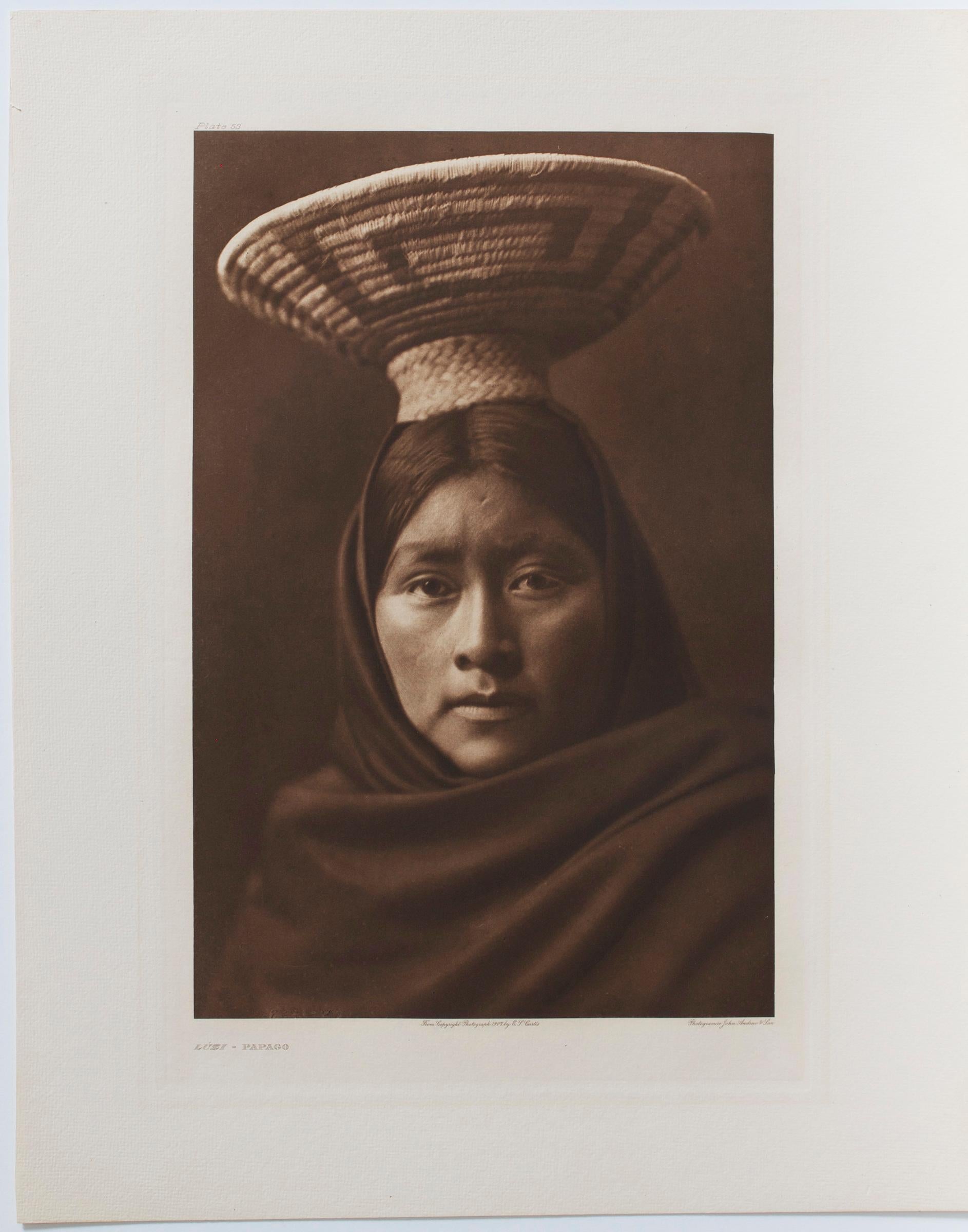
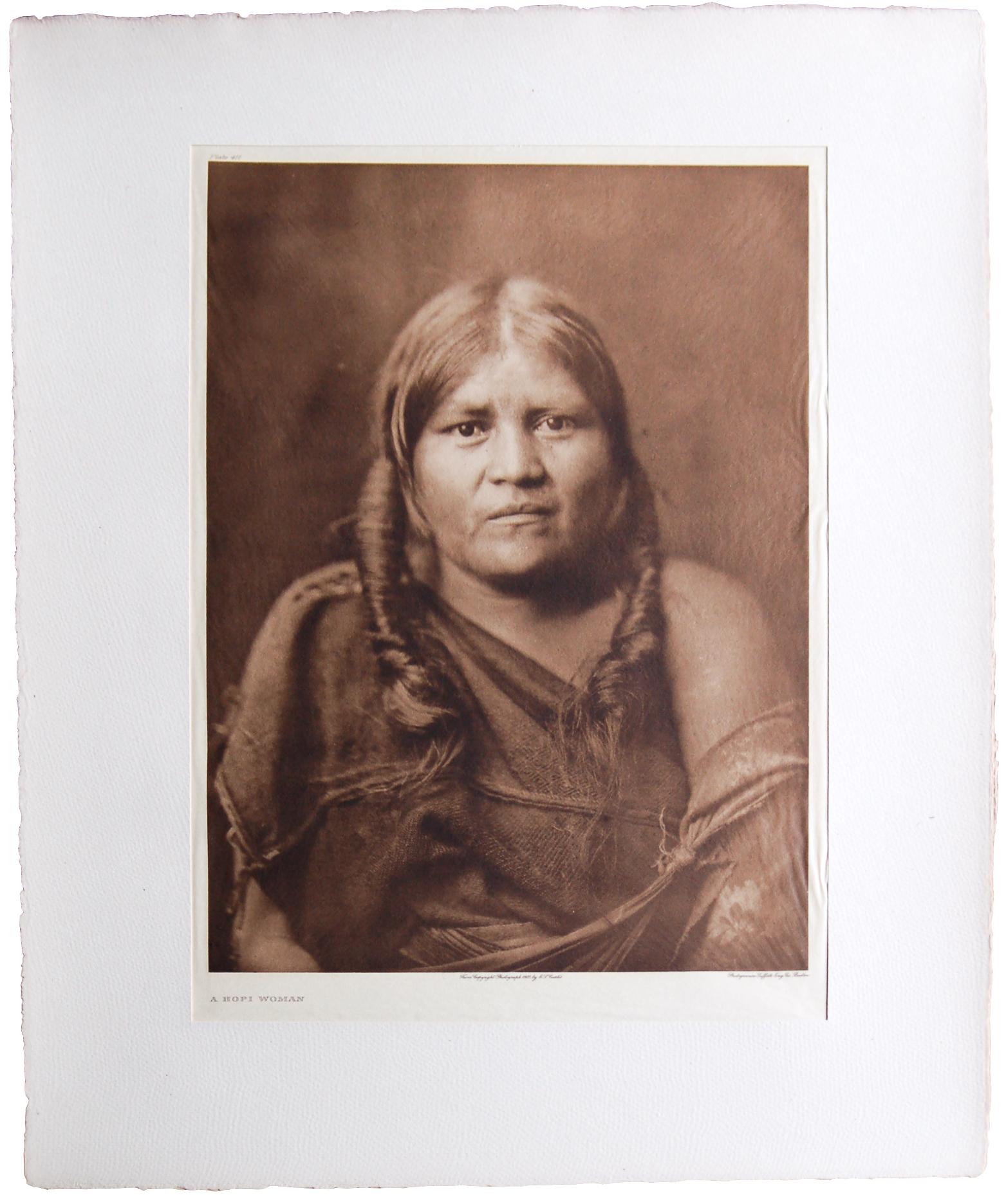
![Aged Pomo Woman [Plate 488]](https://a.1stdibscdn.com/edward-curtis-photography-aged-pomo-woman-plate-488-for-sale/a_9323/1576623013042/Curtis_EDU0001_Aged_Pomo_Woman_Plate_488_artnet_master.jpg)
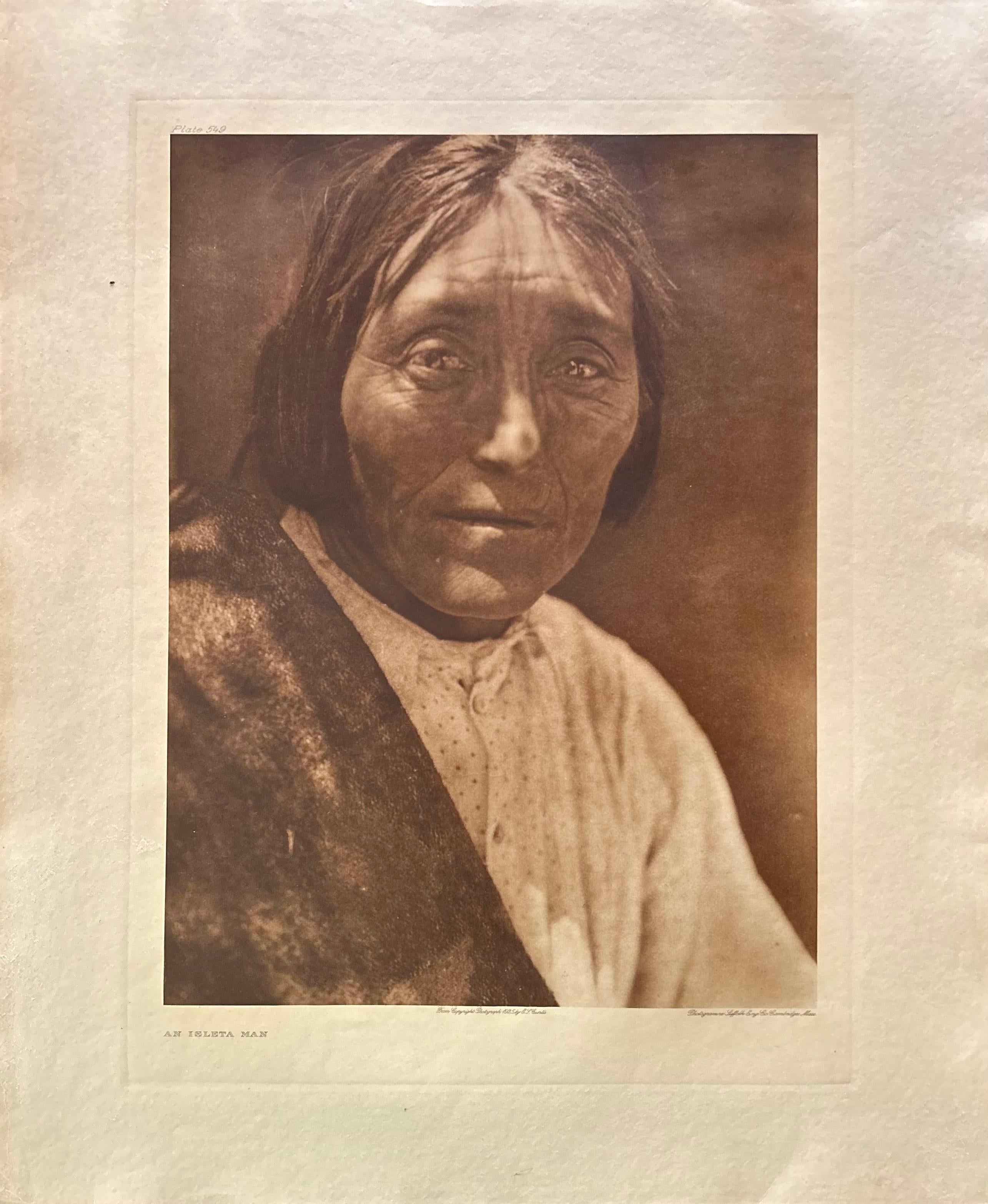
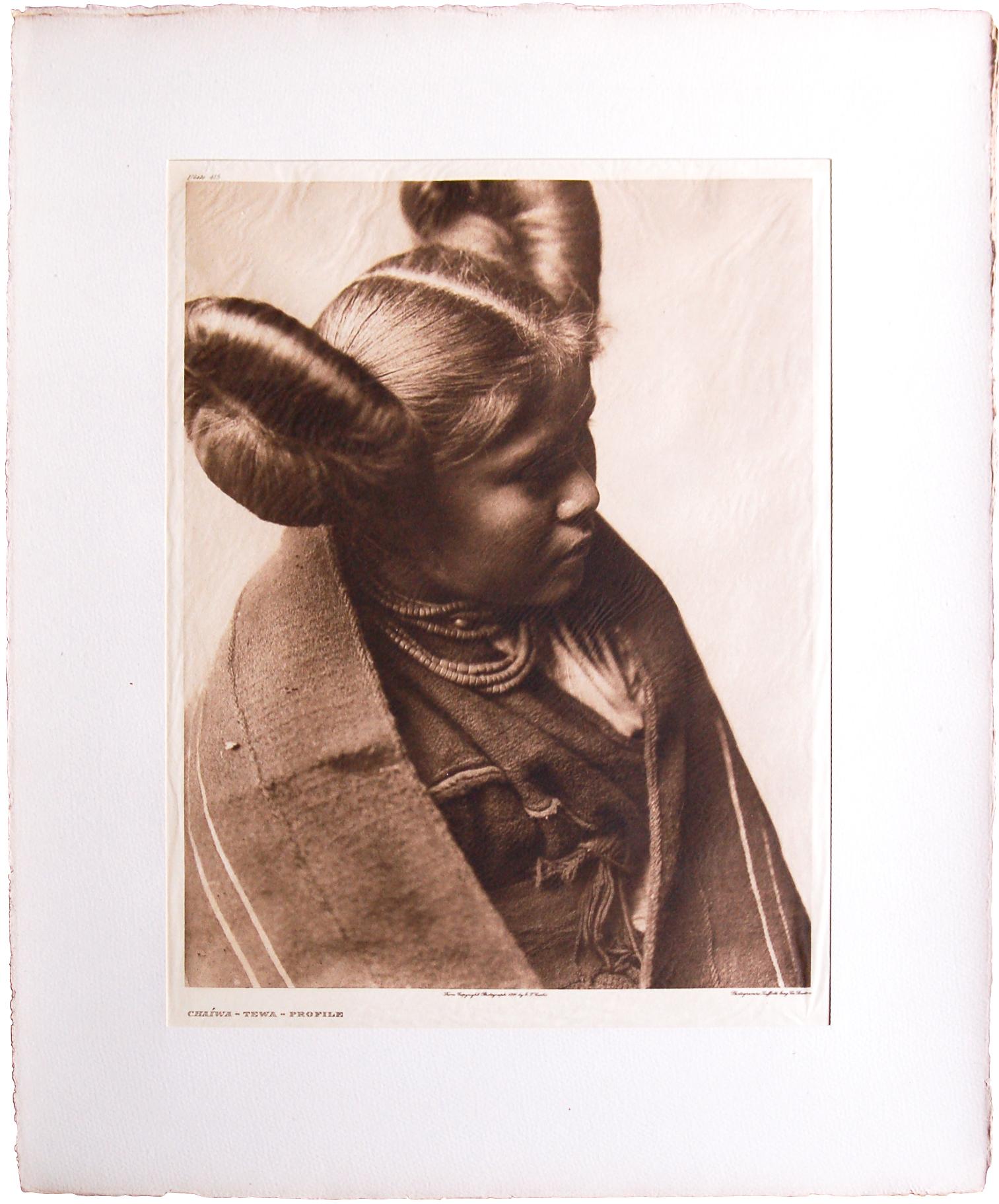
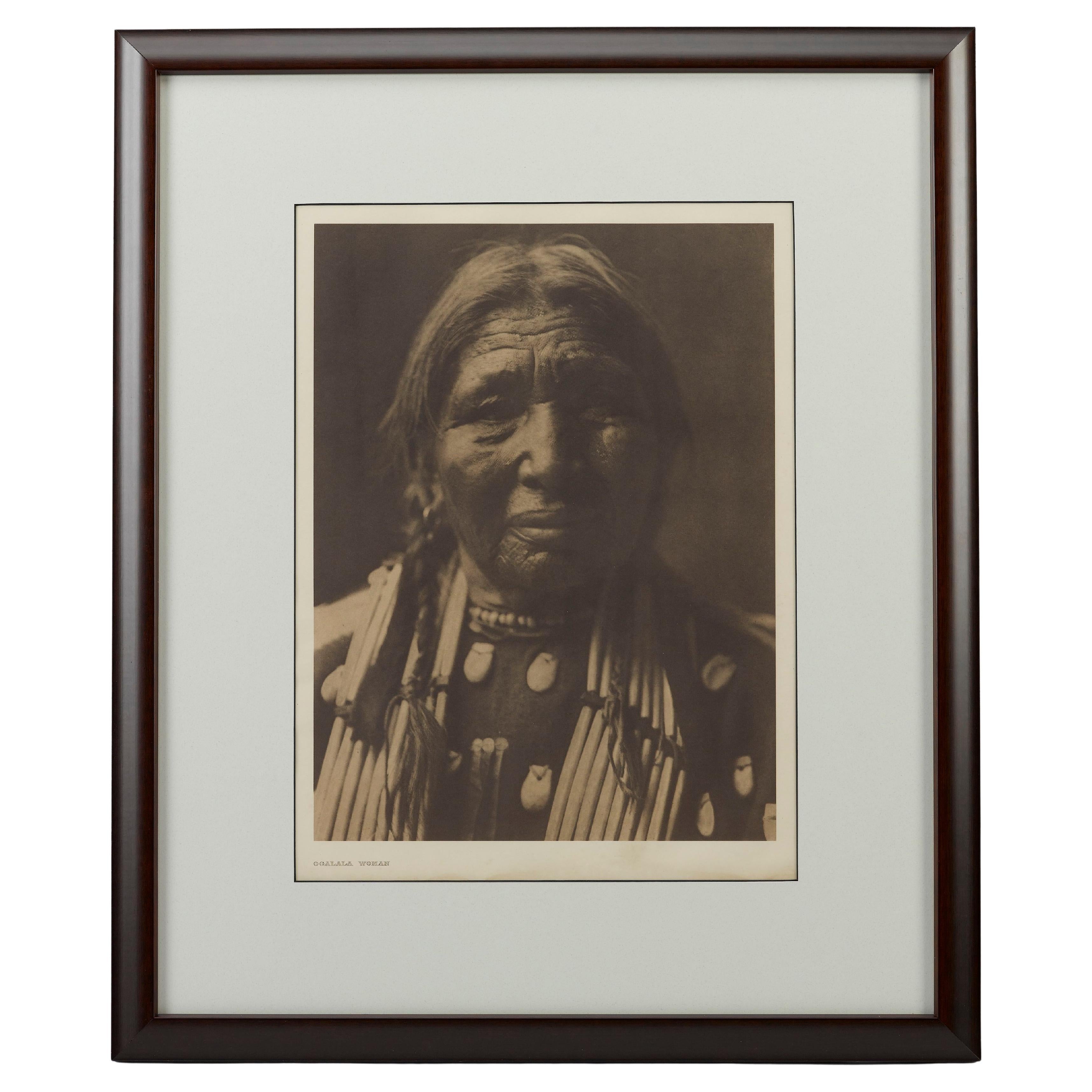
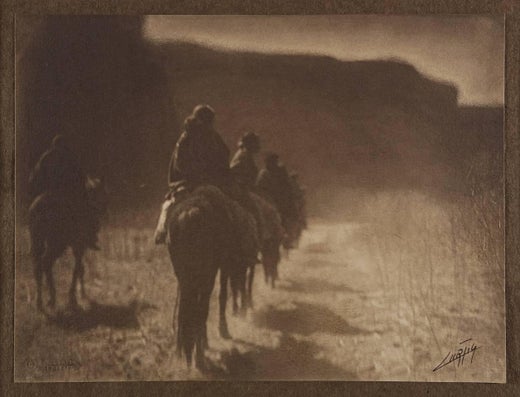
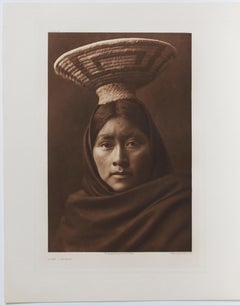
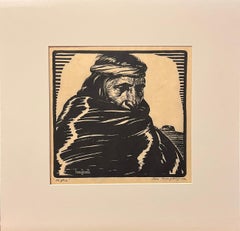
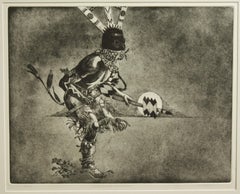
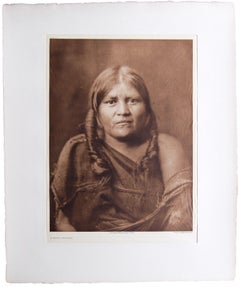
![Aged Pomo Woman [Plate 488]](https://a.1stdibscdn.com/edward-curtis-photography-aged-pomo-woman-plate-488-for-sale/a_9323/1576623013042/Curtis_EDU0001_Aged_Pomo_Woman_Plate_488_artnet_master.jpg?width=240)
